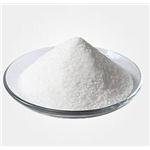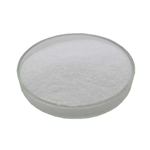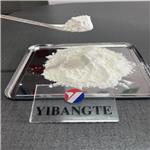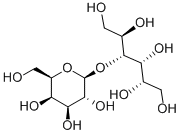- Lactitol
-

- $0.00 / 1kg
-
2024-03-26
- CAS:585-86-4
- Min. Order: 1kg
- Purity: 99%
- Supply Ability: 20tons
- Lactitol
-

- $20.00 / 1KG
-
2023-11-30
- CAS:585-86-4
- Min. Order: 1KG
- Purity: 99% HPLC,USP Standard
- Supply Ability: 1000KGs
- LACTITOL
-

- $0.00 / 1kg
-
2023-11-24
- CAS:585-86-4
- Min. Order: 1kg
- Purity: 99%
- Supply Ability: 500000kg
|
| | LACTITOL Basic information |
| Product Name: | LACTITOL | | Synonyms: | 4-O-(beta-D-galacto-hexopyranosyl)-D-glucitol;4-O-?D-Galactopyranosyl-D-glucitol monohydrate;LACTITOL;4-O-(β-Galactosyl)-D-glucitol;D-Glucitol, 4-O-.beta.-D-galactopyranosyl-;4-O-B-D-GALACTOPYRANOSYL-D-GLUCITOL MONOHYDRATE;Lactnol;4-β-D-galactopyranosyl-D-glucito1 | | CAS: | 585-86-4 | | MF: | C12H24O11 | | MW: | 344.31 | | EINECS: | 209-566-5 | | Product Categories: | | | Mol File: | 585-86-4.mol |  |
| | LACTITOL Chemical Properties |
| Melting point | 146° | | alpha | D23 +14° (c = 4 in water) | | Boiling point | 788.5±60.0 °C(Predicted) | | density | 1.69±0.1 g/cm3(Predicted) | | storage temp. | Hygroscopic, Refrigerator, under inert atmosphere | | solubility | Slightly soluble in ethanol (95%) and ether. Soluble 1 in
1.75 of water at 20°C; 1 in 1.61 at 30°C; 1 in 1.49 at 40°C; 1 in
1.39 at 50°C. | | pka | 12.84±0.70(Predicted) | | form | Solid | | color | White to Off-White | | Odor | odorless | | LogP | -3.11 |
| | LACTITOL Usage And Synthesis |
| Description | Lactitol (4-o-(|3-D-Galactopyranosyl)-D-glucitol) is a disaccharide
sugar alcohol derived from lactose by reduction of its glucose
moiety. Lactitol has not been found in nature. It is about 0.4 times
as sweet as sucrose.
In vitro studies with galactosidase-containing enzyme preparations
have demonstrated that lactitol is hydrolyzed only very slowly. In
incubations with human intestinal biopsies, it has been shown that
the human intestinal mucosa does not exhibit any significant dis accharidase activity with lactitol as a substrate. The hydrolytic
activities towards lactitol and isomalt were only 1.3% of those
towards lactose and isomaltulose, respectively. Corresponding exper iments with intestinal preparations of germ-free pigs and convention ally kept minipigs gave similar results. These observations indicate that lactitol is the most slowly digested disaccharide sugar alcohol.
However, in vitro investigations with intestinal enzyme prepara tions provide only relative figures on hydrolysis rates. Experiments
with humans and 14C-labeled lactitol during jejunal perfusion indi cate that lactitol is virtually not assimilated by the human small
intestine. After passage through the small intestine, ingested lac titol reaches the bacterially colonized segments of the gut where
intensive fermentation takes place. Short-chain fatty acids (acetate,
propionate, butyrate) are the major fermentation end products
which are subsequently further metabolized by the host.
Lactitol is slowly fermented in growing cultures by some strepto cocci, actinomyces and lactobacilli. When fed at 25% of the diet
to rats that had been inoculated with Streptococcus mutans, lactitol
was about equally as cariogenic as sorbitol and significantly less
cariogenic than sucrose. Test candies and chocolates sweetened
by lactitol are hypoacidogenic in humans tested by plaque pH
telemetry. Boiled sweets made with 100% lactitol are rough in
texture owing to crystallization, and caused some gastrointestinal
upsets in human volunteers. Since lactitol has only one-third the
sweetness of sucrose, sweets need an additional sweetening agent
for palatability. | | Chemical Properties | Lactitol occurs as white orthorhombic crystals. It is odorless with a
sweet taste that imparts a cooling sensation. It is available in
powdered form and in a range of crystal sizes. The directly
compressible form is a water-granulated product of microcrystalline
aggregates. | | Uses | Lactitol is listed as an excipient in some prescription drugs, such as Adderall. Lactitol is a sugar alcohol used as a replacement bulk sweetener for low calorie foods. It is also used medically as a laxative. | | Production Methods | Lactitol is produced by the catalytic hydrogenation of lactose. | | Definition | ChEBI: Lactitol is a glycosyl alditol consisting of beta-D-galactopyranose and D-glucitol joined by a 1->4 glycosidic bond. It is used as a laxative, as an excipient, and as replacement bulk sweetener in some low-calorie foods. It has a role as a laxative, an excipient and a cathartic. | | Pharmaceutical Applications | Lactitol is used as a noncariogenic replacement for sucrose. It is also
used as a diluent in solid dosage forms.(1) A direct-compression
form is available,(2,3) as is a direct-compression blend of lactose and
lactitol. Lactitol is also used therapeutically in the treatment of
hepatic encephalopathy and as a laxative. | | Safety | Lactitol is regarded as a nontoxic and nonirritant substance. It is not
fermented significantly in the mouth, and is not cariogenic.It is
not absorbed in the small intestine, but is broken down by
microflora in the large intestine, and is metabolized independently
of insulin. In large doses it has a laxative effect; therapeutically,
10–20 g daily in a single oral dose is administered for this purpose.
LD50 (mouse, oral): >23 g/kg
LD50 (rat, oral): 30 g/kg | | storage | Lactitol as the monohydrate is nonhygroscopic and is stable under
humid conditions. It is stable to heat and does not take part in the
Maillard reaction. In acidic solution, lactitol slowly hydrolyzes to
sorbitol and galactose. Lactitol is very resistant to microbiological
breakdown and fermentation. Store in a well-closed container.
When the compound is stored in an unopened container at 25°C
and 60% relative humidity, a shelf-life in excess of 3 years is
appropriate. | | Regulatory Status | GRAS listed. Accepted for use as a food additive in Europe.
Included in the Canadian List of Acceptable Non-medicinal
Ingredients. |
| | LACTITOL Preparation Products And Raw materials |
|